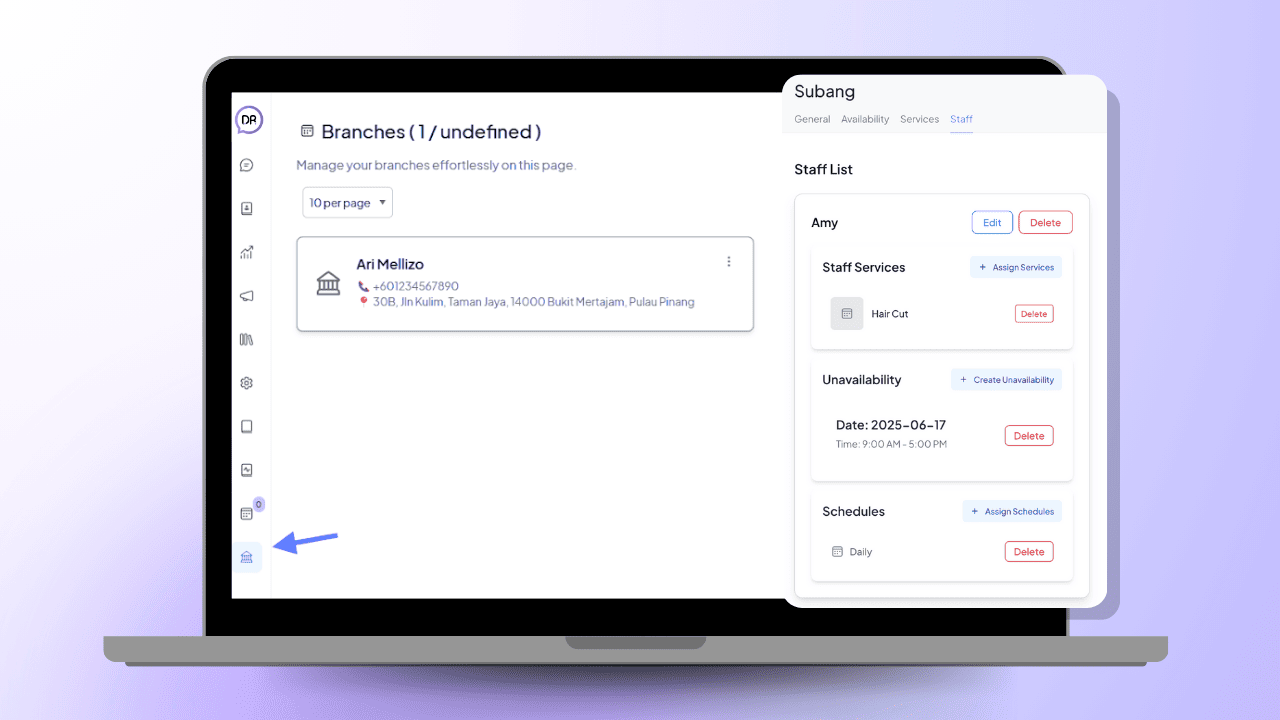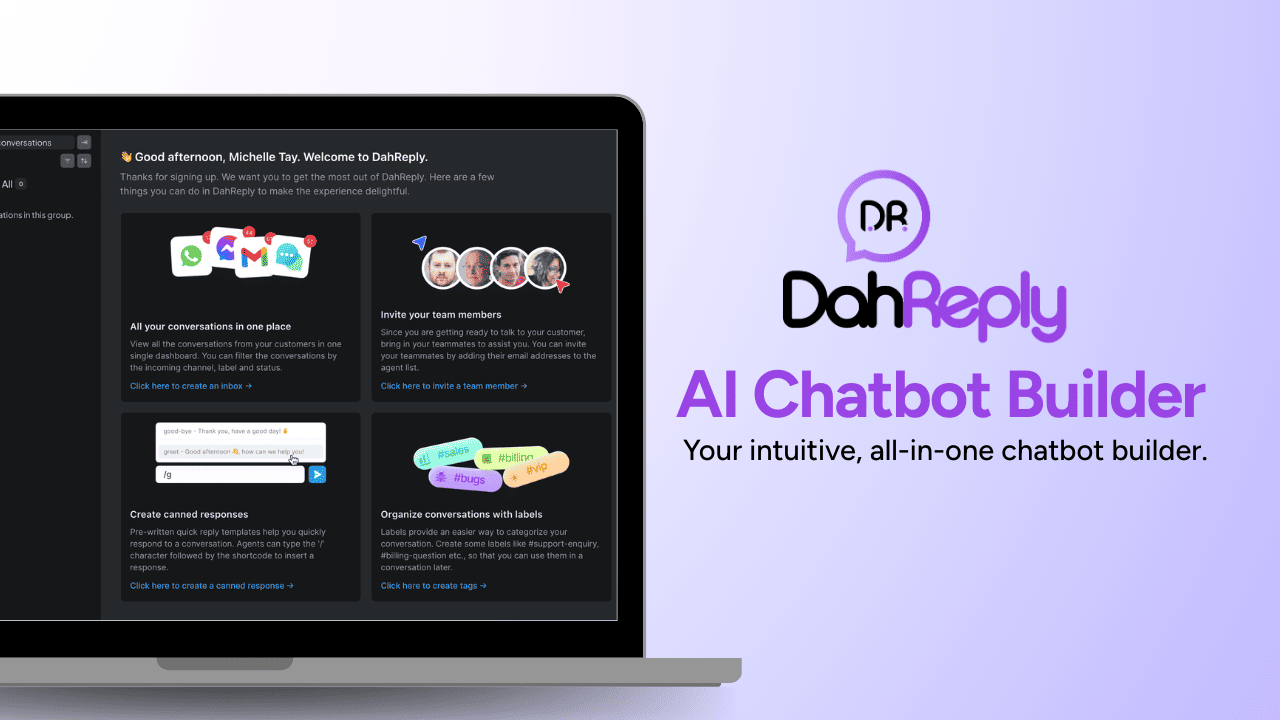TABLE OF CONTENTS
15 September 2025
Chatbots Aren’t “Set and Forget” Anymore
Chatbots have become the go-to digital tool for businesses. They book appointments, capture leads, answer FAQs, and even handle promotions. In fact, by 2025, over 70% of small businesses in Asia are using chatbots in some way.
But here’s the problem: too many businesses installed a bot once and never touched it again. The world moved on — promotions changed, products evolved, customer habits shifted — yet the chatbot still spoke in the past tense.
Customers noticed. They asked about a promo that expired months ago. They were told about services that no longer existed. They showed up at the wrong time because the bot had outdated hours. And many quietly left, frustrated.
In 2025, this isn’t just an annoyance. Failing to update your chatbot’s knowledge base is the #1 mistake businesses — especially SMEs — are making.
Why? Because chatbots today are no longer just FAQ machines. They are:
- Lead filters.
- Booking assistants.
- Campaign broadcasters.
- Upselling sales reps.
- Data reporters.
If the information behind them is wrong, every one of those revenue-driving functions breaks. Let’s unpack why this mistake hurts SMEs the most, why even big companies aren’t immune, and what you can do today to fix it.

Why Outdated Chatbots Hurt More Than You Think
Chatbots thrive on accuracy. Unlike websites, which customers treat as “static,” chatbots are conversational and personal. If your website has old content, customers might forgive it.
But when a customer chats with your bot, they’re not looking for entertainment. They want quick, reliable answers. If your bot fails at that, the damage is immediate:
- Trust drops instantly. One wrong answer can make your business look unprofessional.
- Leads slip away. Customers don’t clarify — they just leave.
- Lost revenue. Outdated promotions or pricing frustrate customers before they even reach checkout.
- Reputation takes a hit. In SMEs, word-of-mouth is everything. One bad experience spreads fast.
In a world where first impressions often happen in chat, an outdated bot is worse than no bot at all. Customers expect accuracy in real time — and when they don’t get it, they leave.
What Outdated Chatbots Look Like (And Customers Notice)
Here are some real-world examples of how outdated bots frustrate customers:
- Old opening hours: A customer shows up at 8pm because your chatbot said you’re open, but you actually changed to closing at 7pm. That’s a wasted trip and a lost customer.
- Expired promotions: Someone asks about a 20% discount they saw in chat, only to be told at checkout that it expired months ago. Trust broken.
- Wrong pricing: The bot says a haircut is RM50, but your new menu is RM70. Customers feel misled, even if it’s unintentional.
- Missing new services: You added a premium facial treatment, but the chatbot doesn’t mention it. That’s missed revenue right there.
The worst part? Customers rarely tell you about these mistakes. They just leave — often straight to a competitor who gives them the right info.

Some might wonder: Don’t big companies make the same mistake? They do. But the consequences look very different depending on the size of the business.
SMEs: Why They’re Hit Hardest
- Every customer counts. Losing even five bookings in a month could slash revenue meaningfully.
- Trust is their edge. Small businesses win by being personal and accurate. An outdated chatbot undermines that instantly.
- Few safety nets. No call centre, no backup team — often the chatbot is the main channel.
- Fragile reputation. One bad review can scare off dozens of potential customers.
Corporates: Why They Can Absorb It (For Now)
- Multiple touchpoints. Call centres, sales reps, and social media teams can “rescue” frustrated customers.
- Established brand equity. Customers give them more chances before leaving.
- Scale dilutes mistakes. If 1% of conversations go wrong, the impact is minor at their volume.
- Resources to patch quickly. Dedicated teams monitor and update bots more frequently.
The takeaway: SMEs feel the pain immediately and disproportionately. Big brands can cushion it, but repeated chatbot failures will still erode long-term trust.

The Real Cost of an Outdated Chatbot
You might think, “It’s just a wrong answer here and there — no big deal.” But over time, the costs add up:
- Lost sales: Customers abandon the chat or fail to book.
- Higher no-shows: Outdated reminders or policies confuse customers.
- Lower trust: People feel your business isn’t professional.
- Negative reviews: Mistakes online can turn into public complaints.
- Wasted investment: You paid for a chatbot, but it’s not helping your bottom line.
Now let’s put numbers to it:
- If 100 people interact with your chatbot monthly…
- Even if only 10% get wrong info and leave…
- That’s 10 lost potential sales a month.
Multiply that by your average customer value (RM100? RM300?) and suddenly, your “harmless outdated bot” is costing you thousands per year.
Remember, your chatbot is often the first touchpoint a new customer has with your business. If it’s outdated, that first impression is already broken.
How to Avoid This Mistake (Practical Steps)
Here’s where most articles stop. But let’s get practical.
The good news? Fixing this mistake doesn’t require a huge budget or a big team. Here’s how SMEs can keep chatbots fresh and useful:

1. Assign a Chatbot “Owner”
Don’t treat your chatbot as “everyone’s responsibility.” When something is everyone’s job, it’s no one’s job.
Assign one person (it could even be you, or a staff member) to be accountable for chatbot updates.
2. Create an Update Schedule
Set a simple routine:
- Monthly check-ins: Update promotions, prices, and services.
- Seasonal refresh: Add festive greetings and relevant offers (Hari Raya, Christmas, etc.).
- Quarterly audits: Review FAQs and add new questions based on customer behaviour.

3. Fine-Tune on Your Knowledge Base
Dah Reply’s AI chatbots can be fine-tuned on your own documents, menus, or FAQs. This means updates can be as easy as uploading a new PDF, Google Drive, or even syncing it to your website— no coding required.
4. Integrate With Your Systems
The more your bot pulls from live data, the less manual updating you’ll need to do. For example, when your booking calendar, CRM, or product catalogue changes, your chatbot should know instantly — no extra work required.
The good news? With DahReply’s portal, you don’t even need multiple platforms. It comes with an in-built booking calendar, contact list, and campaign tools that act like a lightweight CRM. That means:
- Customers can book appointments directly into your calendar.
- Leads are saved automatically in your contact list.
- Campaign blasts and follow-ups can be managed in one place.
Instead of juggling five different tools, you get one dashboard that keeps your chatbot — and your business — updated in real time.
5. Listen to Customer Feedback
Every quarter, review chat transcripts. See where customers get stuck. Update answers based on real conversations, not guesses.

How Our Chatbot Solves This for SMEs
At DahReply, we’ve seen firsthand how outdated bots damage SMEs. That’s why we designed our chatbot builder to fix the very issue most SMEs struggle with: keeping the bot fresh and useful without adding extra work. Here’s how it helps:
- Easy To Use Dashboard: Our dashboard is built for non-tech users. You can edit opening hours, add a new promotion, or update your product catalogue in just a few clicks — no coding, no IT team needed.
- Fine-Tuned for Your Business: Every chatbot we build is customised on your FAQs, policies, and catalogues. That means it doesn’t just give “generic” answers — it speaks your business language and reflects your unique services.
- One Update, Everywhere: Make a change once, and it instantly applies across all your channels — whether that’s your website, WhatsApp, Messenger, or even Instagram DM. No need to manage multiple bots separately.
- Built-In CRM Features: With DahReply, your chatbot isn’t just answering questions — it’s capturing leads, storing them in a contact list, and syncing bookings directly into your calendar. No need to juggle five different tools.
- Campaigns & Message Blasts: Want to announce a new promo? You can send a campaign blast straight from the chatbot portal to all your contacts. It’s like email marketing, but faster and more personal.
- Smart Analytics & Reports: Your chatbot automatically tracks what customers are asking most. Instead of guessing, you get data-driven insights on what to update, which FAQs to expand, and which products or services people want more information about.
In short: our chatbot doesn’t just reduce your workload — it becomes part of your sales and marketing engine.

The Bottom Line: Chatbots Should Grow With Your Business
Chatbots are no longer “nice-to-have.” In 2025, they are revenue engines — booking assistants, lead filters, campaign drivers. But they’re only as good as the information you feed them.
For SMEs, not updating the bot isn’t just a mistake — it’s a growth blocker. While corporates can cushion the damage, small businesses feel it immediately in lost sales, lost trust, and lost opportunities.
Businesses that avoid the mistake of leaving their chatbot outdated will:
- Build stronger trust with customers.
- Capture more bookings and leads.
- Stay relevant in fast-changing markets.
- Turn their chatbot into a real revenue driver.
Those that don’t? Risk confusing, frustrating, and losing customers.
Don’t let your chatbot go stale. With DahReply’s AI Chatbot Builder, you can keep your bot updated easily — and even train it on your business knowledge.
Try it free today and see how simple updates can be or just WhatsApp us and we’ll walk you through it!
Your customers deserve a chatbot that’s as fresh and reliable as your business.


